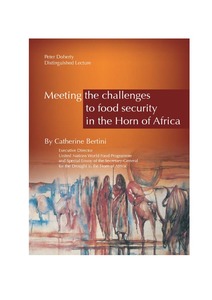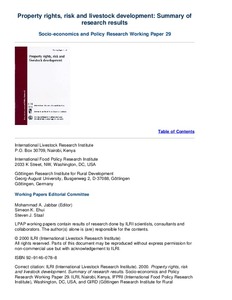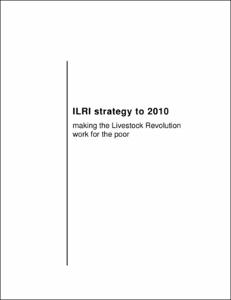Location
Vision, mission and strategy
ILRI's strategy 2013-2022 was approved in December 2012. It emerged from a wide processof consultation and engagement.
ILRI envisions... a world where all people have access to enough food and livelihood options to fulfil their potential.
ILRI’s mission is... to improve food and nutritional security and to reduce poverty in developing countries through research for efficient, safe and sustainable use of livestock—ensuring better lives through livestock.
ILRI’s three strategic objectives are:
- with partners, to develop, test, adapt and promote science-based practices that—being sustainable and scalable—achieve better lives through livestock.
- with partners,to provide compelling scientific evidence in ways that persuade decision-makers—from farms to boardrooms and parliaments—that smarter policies and bigger livestock investments can deliver significant socio-economic, health and environmental dividends to both poor nations and households.
- with partners,to increase capacity among ILRI’s key stakeholders to make better use of livestock science and investments for better lives through livestock.
This is ILRI’s second ten-year strategy. It incorporates a number of changes, many based on learning from the previous strategy (2000–2010, initially produced in 2000 and modified in 2002), an interim strategy (2011–2012) and an assessment of the external and internal environments in which the institute operates.
Members:
Resources
Displaying 911 - 915 of 1152Meeting the challenges to food security in the Horn of Africa: Fourth annual Peter Doherty distinguished lecture
Population pressure, migration and urbanisation: impacts on crop–livestock systems development in West Africa
Population growth and urbanisation are driving a livestock revolution. Mixed farming systems are the present and the foreseeable future of West African livestock systems, with concurrent changes in livestock feeding systems and the role of grazing, fodder and penning. The livestock economy has to be seen as part of a national economy in which urban and rural facets interact. Effective policies need to be based on recognition of the capacity of rural people to invest in improving their livelihoods.
Property rights, risk and livestock development: Summary of research results
ILRI strategy to 2010. Making the livestock revolution work for the poor
This document is divided in four parts. The first part, external influences shaping ILRI's strategy, discusses the role of livestock in poverty alleviation, food and nutritional security, the environment and human health, livestock demand and production trends, productivity challenge, evolution of livestock systems, trends in science and information technologies and stakeholders for international livestock research. The second part highlights rationale for strategic choices while the third part outlines the strategic choices.






